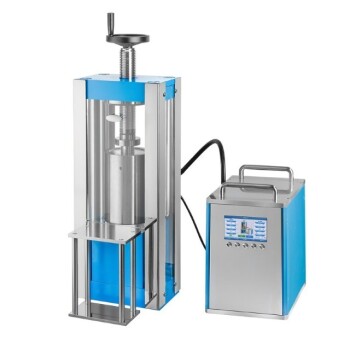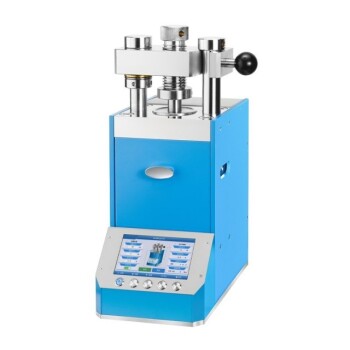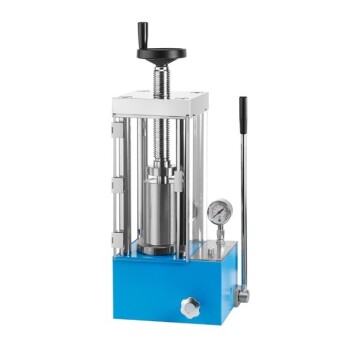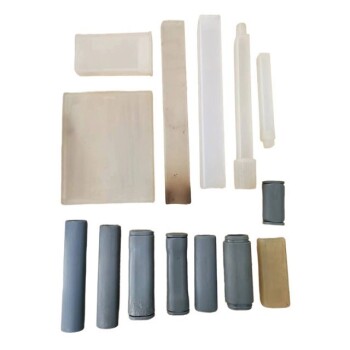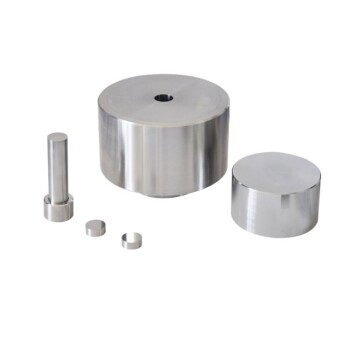The primary advantage of dry bag pressing is its suitability for high-speed, automated production. By integrating the flexible mold directly into the pressure vessel, this method eliminates the manual loading and unloading steps required in wet bag pressing, drastically reducing cycle times for high-volume manufacturing runs.
While all cold isostatic pressing (CIP) excels at creating parts with uniform density, the choice between its two main variants—wet bag and dry bag—is a strategic decision. Dry bag pressing sacrifices some geometric flexibility to gain significant advantages in production speed and automation.
The Foundation: Why Use Isostatic Pressing?
Before comparing dry and wet bag methods, it's essential to understand the fundamental benefits that all cold isostatic pressing provides over more traditional compaction methods like uniaxial (die) pressing.
Uniform Pressure, Uniform Density
Isostatic pressing applies pressure equally from all directions to the powder compact. This is achieved by submerging the mold in a fluid that is then pressurized.
This uniform pressure eliminates the density variations and internal stresses common in uniaxial pressing, where friction with the die walls creates inconsistencies. The result is a "green" part with highly uniform density and greater strength.
Eliminating Die-Wall Friction and Lubricants
Because pressure is applied by a fluid, there is no relative motion between the powder and a hard die wall. This completely removes the need for die-wall lubricants.
Omitting lubricants prevents potential contamination of the powder and simplifies the subsequent sintering process, leading to a purer final product.
Compacting Complex and Brittle Powders
The gentle, uniform nature of isostatic pressure is ideal for compacting brittle materials, fine powders, or expensive materials that are difficult to press. It reduces the risk of cracking and defects.
This method also allows for the creation of parts with complex geometries, such as components with high length-to-diameter ratios or re-entrant angles, which are impossible to form with uniaxial pressing.
Dry Bag vs. Wet Bag: The Critical Process Difference
The key advantages of dry bag pressing become clear when you compare its workflow directly against the more traditional wet bag process.
The Wet Bag Process: Flexibility Over Speed
In wet bag CIP, the powder is sealed in a flexible, standalone mold. This entire sealed assembly is then manually submerged in the pressure fluid inside the vessel.
After the pressure cycle, the mold is removed, cleaned, and opened to retrieve the part. This process is versatile, ideal for R&D, prototyping, and low-volume production of large or highly complex parts, but it is inherently slow and labor-intensive.
The Dry Bag Process: Built for Automation
In dry bag CIP, the flexible mold is a permanent, integrated part of the pressure vessel assembly. Powder is filled into the top of the mold, the automated tooling seals the vessel, and pressure is applied.
After the cycle, the compacted part is automatically ejected, and the system is immediately ready for the next fill. This eliminates the need to immerse and retrieve the mold, making it a much faster, cleaner, and more efficient process.
Understanding the Trade-offs
Choosing dry bag pressing involves a clear trade-off between speed and other production factors. It is not universally superior, but rather optimized for a specific type of manufacturing.
Production Speed vs. Part Complexity
Dry bag pressing is significantly faster, with cycle times that can be less than a minute, compared to many minutes or more for a wet bag process.
However, because the tooling is integrated, dry bag machines are typically designed for simpler, more symmetrical shapes like rods, tubes, and nozzles. Wet bag pressing retains the advantage for one-off, large, or highly intricate geometries.
Initial Investment and Tooling Costs
The specialized, automated tooling required for dry bag pressing represents a much higher upfront capital investment compared to a wet bag system.
This cost is only justified by high production volumes where the lower cost-per-part and high throughput generate a return on the initial investment.
Powder Quality Requirements
Both isostatic pressing methods benefit from powders with good flow characteristics, often requiring more expensive, spray-dried powder to ensure the mold fills evenly.
This is a general cost consideration for CIP, but it is especially critical in an automated dry bag process where consistent powder flow is necessary to maintain high production rates and part quality.
Making the Right Choice for Your Goal
Your decision must be driven by your specific production needs, balancing volume, part complexity, and budget.
- If your primary focus is high-volume production of relatively simple shapes (e.g., spark plug insulators, nozzles, tubes): Dry bag pressing is the clear choice for its unmatched speed and potential for full automation.
- If your primary focus is prototyping, R&D, or producing small batches of large or highly complex parts: Wet bag pressing offers superior geometric flexibility and much lower initial tooling costs.
- If your goal is to achieve superior density and material properties compared to traditional die pressing: Either form of cold isostatic pressing will deliver a significant improvement in part quality and uniformity.
Ultimately, understanding this distinction empowers you to select the precise manufacturing tool that aligns with your operational strategy and production goals.
Summary Table:
| Advantage | Description |
|---|---|
| High-Speed Production | Reduces cycle times significantly, ideal for automated runs. |
| Automation | Eliminates manual steps with integrated mold for continuous operation. |
| Uniform Density | Ensures consistent part quality without density variations. |
| Clean Process | No need for mold immersion, reducing contamination risks. |
| Cost-Effective for Volume | Lower cost-per-part in high-volume scenarios. |
Ready to enhance your lab's efficiency with automated cold isostatic pressing? KINTEK specializes in lab press machines, including automatic lab presses, isostatic presses, and heated lab presses, designed to meet the needs of laboratories focused on high-volume production. Our solutions deliver superior speed, uniform density, and automation benefits for parts like rods and tubes. Contact us today to discuss how we can optimize your manufacturing process!
Visual Guide
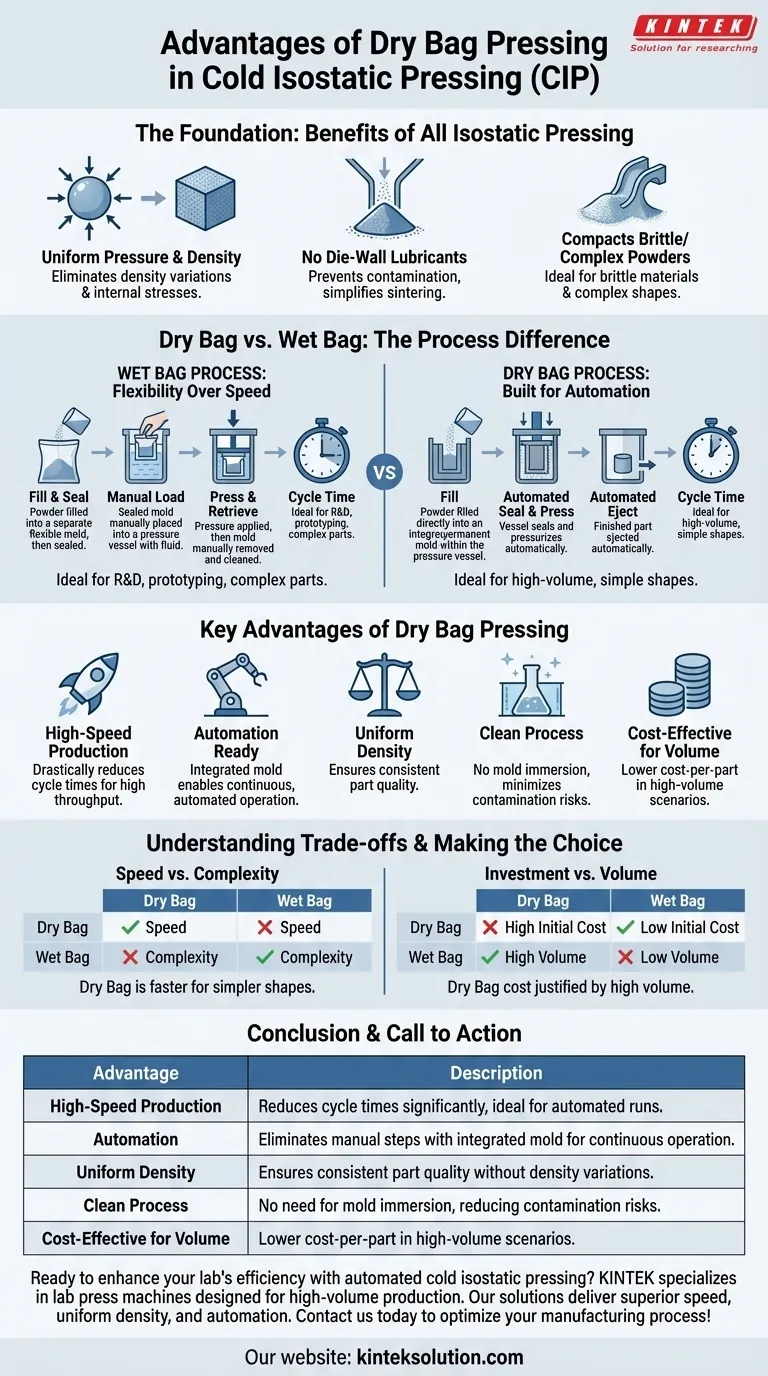
Related Products
- Electric Split Lab Cold Isostatic Pressing CIP Machine
- Automatic Lab Cold Isostatic Pressing CIP Machine
- Manual Cold Isostatic Pressing CIP Machine Pellet Press
- Lab Isostatic Pressing Molds for Isostatic Molding
- Laboratory Hydraulic Press 2T Lab Pellet Press for KBR FTIR
People Also Ask
- Why is material loss low in cold isostatic pressing? Achieve High Material Yield with CIP
- What are the advantages of Cold Isostatic Pressing (CIP) for pellet preparation? Achieve Superior Density and Uniformity
- How does Cold Isostatic Pressing (CIP) compare to Powder Injection Molding (PIM) in terms of shape complexity? Choose the Best Process for Your Parts
- What are some specific aerospace applications of isostatic pressing? Enhance Performance and Reliability in Extreme Conditions
- How is cold isostatic pressing used in complex-shaped component production? Achieve Uniform Density for Intricate Parts
